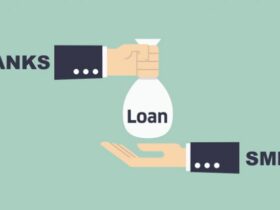Knowing the Benefits and Drawbacks of Each Rate Type
There are various things to think about when shopping for financial products.
It can take time to determine which features the best fit your needs, given the current changes in the financial industry and specific requirements for the financial products you use daily. These are a few looks at two of them: variable and fixed interest rates, how they operate, and potential differences between them, and when each of these rate varieties could be advantageous.
DIFFERENTIATION OF FIXED VS. VARIABLE INTEREST RATE
At a fixed rate, you can see your monthly payment as well as the total amount you will pay for the loan. You can pick fixed rates if you want a loan payment that won’t vary.
A variable-rate loan, the interest rate fluctuates along with the index rate so that it may go up or down. As a result, your monthly payment may increase due to a possible increase in your interest rate. A variable rate loan can be riskier for a borrower if it has a longer duration because rates are more likely to rise.
Before deciding on the type of interest rate you want to use, take into account the following factors:
- Look at market conditions: It is difficult to predict precisely how much more one form of interest rate would cost you than the other. However, consider the state of the economy and whether interest rates are growing or declining. For instance, the Federal Reserve is raising its interest rate to fight inflation; thus, you may anticipate that variable interest rates will do the same.
- Consider your level of risk tolerance: By choosing a variable-rate loan, you assume the risk of increased interest rates. In contrast, with a fixed rate, the lender accepts the risk. Consider whether you would like the security of a fixed rate or would be content with short-term interest rate volatility.
- Consider the time it will take you to repay the loan: If you’re a college student who doesn’t intend to start making payments until you graduate, that takes a long time for your interest rate to change with a variable rate. When you consider your entire payback period, that length of time becomes much longer. However, a shorter payback period is preferable to a long one if you’re a parent or student who expects to begin paying payments right away.
FINAL OVERVIEW
If you’re unsure whether to choose a fixed or variable loan, consider dividing your loan between the two possibilities.
When you split your loan, you designate a portion to a variable loan and the remaining amount to a fixed loan. You can opt for a 50/50, 60/40, or another ratio. You have the choice.
Consider inquiring about your possibilities with your lender.
Consider each of these aspects carefully and how they might affect you whether you decide between a variable- or fixed-rate student loan. And keep in mind that if you choose that the other choice is better for you in the future, you may change your mind and refinance your loans.








